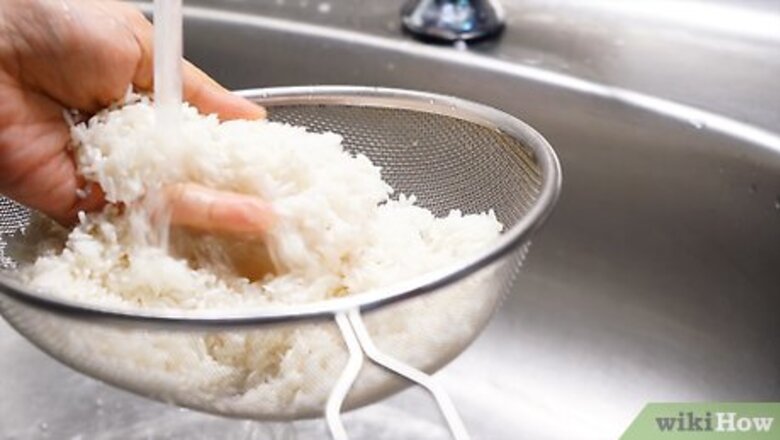
views
Rinse your rice thoroughly 3 times before cooking.
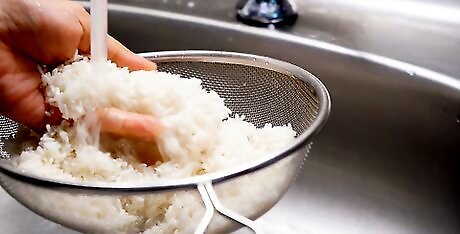
Rinsing removes the extra starches on your rice, making it less sticky. To rinse, put your rice in a pot and add just enough water to cover the rice. Swirl the rice around with your fingers—you’ll notice the water turn milky—then drain as much water as possible. Repeat the swirling and draining process 3 times, or until the water becomes mostly clear. Alternatively, put your rice in a colander or sieve and rinse it under cold water until the water running out of the sieve is nearly clear. Rinsing isn't required, but is recommended. When the starch on the outside of the grains is rinsed away, they stay more separated when they're cooked.
Soak your rice for about 30 minutes.
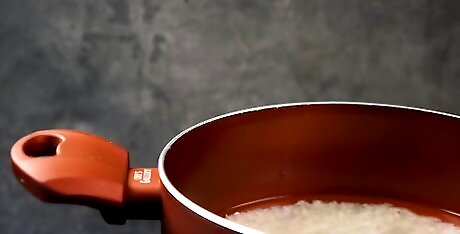
Rice absorbs water when it soaks, which speeds up the cooking time. Put approximately equal amounts of your rinsed rice and fresh water into a pot and let the rice soak for at least 30 minutes or as much as an hour. If you’re pressed for time, soaking isn’t absolutely necessary. Shorten the soaking time or skip it entirely. Rice can soak for up to half a day. Start soaking your rice before work or other activities so it’s ready to cook as soon as you’re home.
Add fresh cooking water to the pot.
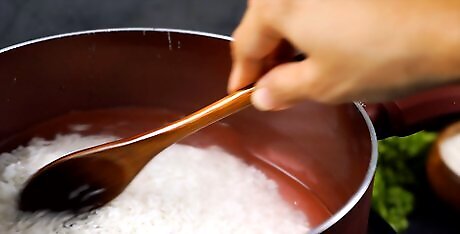
The best white rice to water ratio is 1 part rice to 1.5 parts water. Drain the soaking water out of your pot and add 1.5 times more water than you have rice. For example, if you’re making 2 cups (440 g) of rice, add 3 cups (710 mL) of water. Stir the rice a bit with a wooden spoon. For more flavorful white rice, use chicken, beef, or vegetable broth in place of water. One old trick to get the right amount of water is to hover your fingertip on top of the rice and add water until your first knuckle crease is covered. For 2 cups (440 g) or less of rice, a 2-quart (1.9 L) pot with a tight-fitting lid will be a sufficient size. This amount serves 4-6 people. You can also add a little bit of chicken stock to the pot to give your rice a little extra flavor.
Put the pot over medium-high heat.

Leave the pot uncovered and bring the water to a boil. Keep it boiling until the water level is just below the level of rice. If it’s boiling too aggressively or water starts sloshing over the sides of the pot, turn the heat down slightly. Keep an eye on your rice during the boiling phase. It’ll be safe to walk away after you turn the heat down later.
Add salt and butter for seasoning.
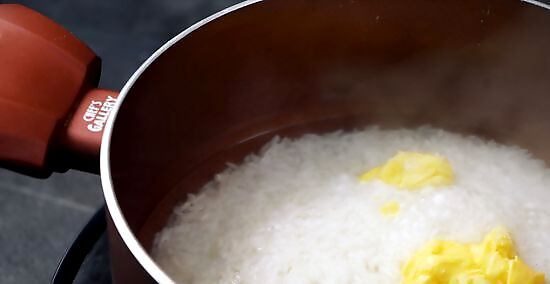
Salt, butter, or oil are easy ways to add flavor and moisture to your rice. Add about 1 tablespoon (15 mL) of butter (or oil if you’re vegan) and 0.5 teaspoons (2.8 g) of salt for every 1 cup (220 g) of uncooked rice. Besides adding flavor, butter or oil will also keep your rice moist and prevent drying out. Consider the other foods you’re pairing with your rice. If the other dishes are already very flavorful or salty, you might not need any seasoning in the rice.
Simmer for 18 to 20 minutes.
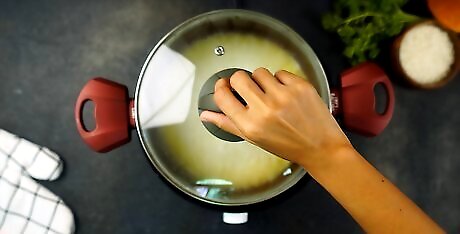
Turn down the heat, cover the pot, and let the rice simmer until it’s done. Resist the urge to lift the lid and stir or check on the rice—you want to keep the pot fully sealed the entire time. The rice is finished when almost all of the water is gone and you see steam holes in the surface of the rice. Make sure the pot has a lid that fits tightly to prevent too much steam from escaping the pot. If you’ve had an issue with soggy rice in the past or your lid fits loosely, lay a towel over the pot and then place the lid on top. The towel will soak up excess condensation. Fold the corners on top of the pot so they don’t catch fire.
Let the rice rest for 10 minutes.
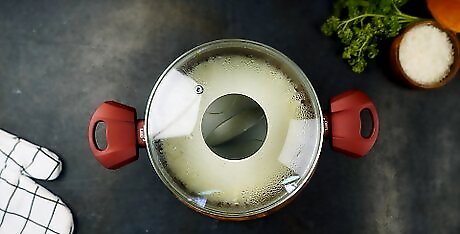
Turn off the heat and let the pot sit with the lid on. This allows the grains to absorb all of the remaining moisture in the pot and results in more evenly cooked, fluffy rice. If you’re preparing other dishes at the same time, just leave the lid on until you’re almost ready to serve. Move the pot off the heat to a cool burner or heat-safe surface to rest.
Fluff the rice with a fork.
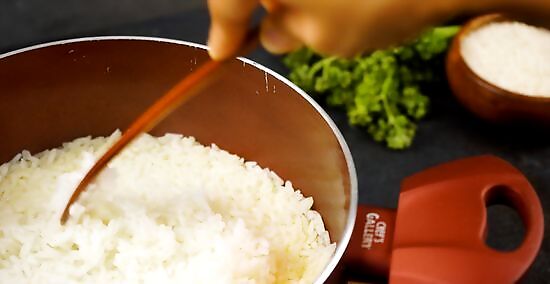
Remove the lid and break up the grains with a fork, chopsticks, or rice paddle. This releases extra steam trapped in the rice and gives it a fluffy texture. After it’s fluffed, your delicious white rice is ready to serve!
Refrigerate leftovers in an airtight container.

Cooked white rice is good for about 2 days when stored properly. It’s important to refrigerate rice ASAP since warm, wet foods attract bacteria quickly. First, spread the leftovers out on a baking tray so they can cool rapidly. Then put the leftovers in an airtight container or plastic bag. Reheat leftovers on the stove or in the microwave. Add a splash of water to make up for how the rice dries out in storage.

















Comments
0 comment